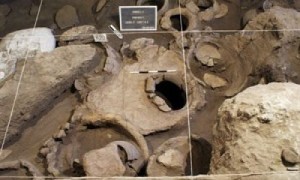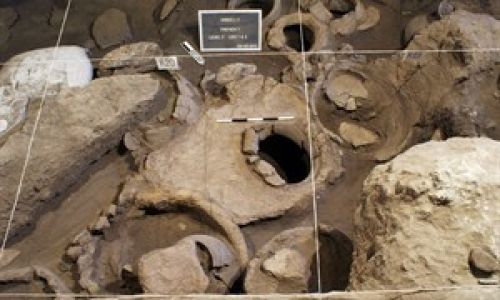

WASHINGTON – The earliest known winery has been uncovered in a cave in the mountains of Armenia.
A vat to press the grapes, fermentation jars and even a cup and drinking bowl dating to about 6,000 years ago were discovered in the cave complex by an international team of researchers.
While older evidence of wine drinking has been found, this is the earliest example of complete wine production, according to Gregory Areshian of the University of California, Los Angeles, co-director of the excavation.
The findings, announced Tuesday by the National Geographic Society, are published in the online edition of the Journal of Archaeological Science.
“The evidence argues convincingly for a wine-making facility,” said Patrick McGovern, scientific director of the Biomolecular Archaeology Laboratory at the University of Pennsylvania Museum in Philadelphia, who was not part of the research team.
Such large scale wine production implies that the Eurasian grape had already been domesticated, said McGovern, author of “Uncorking the Past: The Quest for Wine, Beer, and Other Alcoholic Beverages.”
The same Armenian area was the site of the discovery of the oldest known leather shoe, dated about 5,500 years ago. That discovery at the area known as Areni-1 was reported last summer.
According to the archeologists, inside the cave was a shallow basin about 3-feet across that was positioned to drain into a deep vat.
The basin could have served as a wine press where people stomped the grapes with their feet, a method Areshian noted was traditional for centuries.
They also found grape seeds, remains of pressed grapes and dozens of dried vines. The seeds were from the same type of grapes — Vitis vinifera vinifera — still used to make wine.
The earliest comparable remains were found in the tomb of the ancient Egyptian king Scorpion I, dating to around 5,100 years ago.
Because the wine-making facility was found surrounded by graves, the researchers suggest the wine may have been intended for ceremonial use.
That made sense to McGovern, who noted that wine was the main beverage at funeral feasts and later used for tomb offerings.
Indeed, he said: “Even in lowland regions like ancient Egypt where beer reigned supreme, special wines from the Nile Delta were required as funerary offerings and huge quantities of wine were consumed at major royal and religious festivals.”
McGovern noted that similar vats for treading on grapes and jars for storage have been found around the Mediterranean area.
In his books, McGovern has suggested that a “wine culture,” including the domestication of the Eurasian grape, was first consolidated in the mountainous regions around Armenia before moving to the south.










